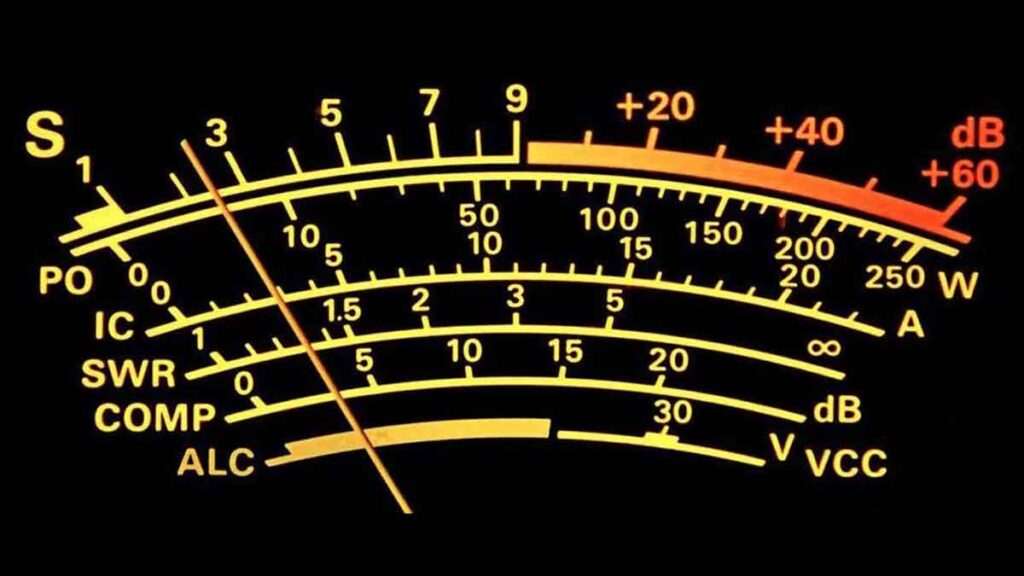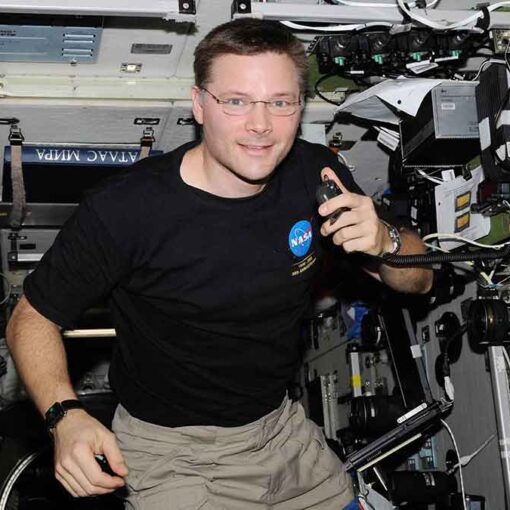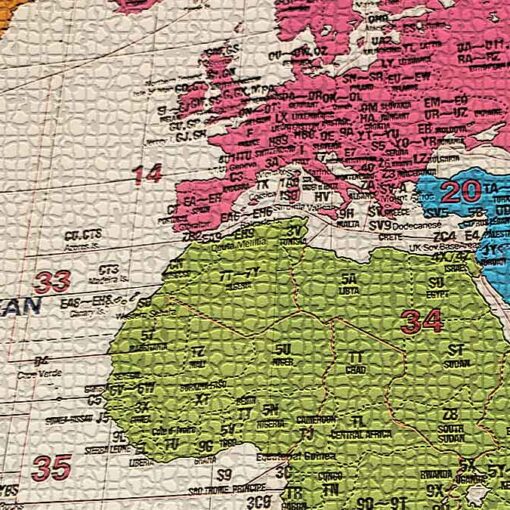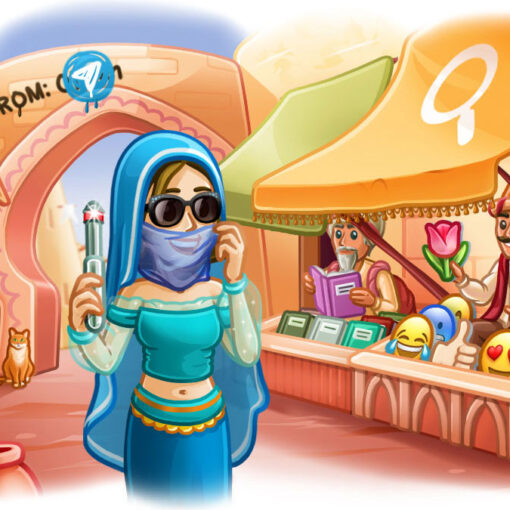RS report
On the telephone, the two correspondents exchange an RS report – a report on Readability and Signal Strength.
We have already mentioned that with telephony contacts, you should not overuse the Q-code, but if you use it, do it correctly. QRK stands for signal intelligibility, which is the same as the “R” in the RS report. QSA stands for signal strength, like the “S” in the RS report.
Caution! One thing is different and important: the S in the RS report varies between 1 and 9, while the QSA code can only be between 1 and 5. So don’t say: “Your QSA is 5 and QRK – 9 (as sometimes we can hear)”, and if you still want to use the Q code, say: “Your QRK is 5 and QSA 5”. Of course, it is much simpler to say “RS 59”. On CW, the use of QRK and QSA has almost disappeared. Instead, CW only uses the RST report (see CW below).
The strength of modern equipment can also be measured with an S-meter, the rest of the assessments are generally subjective. If there is no S-meter, the strength is also evaluated subjectively.
Grade for intelligibility and strength in RS report:
| Readability | Signal Strength | ||
| R1 | Unintelligible | S1 | None, fading signal |
| R2 | Almost unintelligible | S2 | Very weak signal |
| R3 | Understandable with difficulty | S3 | Weak signal |
| R4 | Understood without difficulty | S4 | Moderate signal |
| R5 | Perfectly understandable | S5 | Acceptably good signal |
| S6 | Good signal | ||
| S7 | Pretty good signal | ||
| S8 | Strong signal | ||
| S9 | Very strong signal | ||
Using the word “over” at the end of your line is recommended, but not required. A QSO consists of a series of transmissions (replies) or a series of “overs”. “over” replaces “transfer to you”.
If the signal strength is not very good and the intelligibility is not perfect, you can spell your name, for example: “My name is Tony, I spell tango oscar november yankee”. Do NOT spell it twice: “…tango tango oscar oscar november november yankee yankee”. This is not the way to spell the name Tony.
RST report
It has already been discussed that R and S are derived from “Intelligibility” (1 to 5) and “Signal Strength” (1 to 9) as used in telephony. T (1 to 9) in the signal report is derived from “Tone”. The number is an indicator of the purity of sound in the CW signal, which should be pure sinusoidal without distortion.
Official tone rating in RST rating:
| T1 | 60 Hz (or 50 Hz) hum, extra coarse and wide |
| T2 | Too harsh hum, very hoarse signal |
| ТЗ | Rectified AC hum, but not filtered |
| T4 | Broom, some signs of filtering |
| Т5 | Filtered AC but heavily overmodulated tone |
| T6 | Filtered tone, obvious traces of overmodulation |
| T7 | Near clean tone, traces of overmodulation |
| T8 | Near perfect tone, slight traces of overmodulation |
| T9 | Perfect tone, no trace of overmodulation |
The original descriptions evaluating the various cases of T date back to the early years of ham radio, when a pure CW tone was the exception rather than the rule. The table above descriptionva modern CW tone ratings as published in 1995 (source: W4NRL).
In practice, we do not use all official tone levels (T). This also fits the general state of technology today.
Modern practical use of tone rating in RST rating:
| T1 | deeply modulated CW, elements of wild oscillations, or extremely rough AC (means: get off the air with such a bad signal!) |
| T5 | very noticeable AC component (often due to poorly regulated transmitter or amplifier power supply) |
| T7
T6 T7 T8 |
slight, barely noticeable AC component |
| T9 | perfect pitch, undistorted sine wave |
Nowadays, the most common defects of the CW signal are chirp and the even more common click or click of the switch (see below).
Chirps and clicks used to be very common problems with the CW signal: every operator knew that 579C was a report that meant a chirping signal, and 589K meant a key click. Few hams today know what the “C” and “K” at the end of the RST report mean, so you better transmit “CHIRP” or “BAD CHIRP” and “CLICKS” or “BAD CLICKS” in whole words as part of your report.
RSV report – used for SSTV
In SSTV operation, we do not exchange an RS report (telephony) nor an RST report (CW), but an RSV report, where V is derived from video and is an estimate of picture quality.
R (1 to 5) and S (1 to 9) have the same meanings as used on telephony and CW.
Evaluation of video signal in RCV report:
| V1 | Strong QRMs and image distortion, part of it indecipherable |
| V2 | Heavily disturbed image, hard to read part of initial |
| V3 | Medium image quality |
| V4 | Good image, little distortion, little interference |
| V5 | Image Perfect |
RSQ Report
The traditional RST report is unsuitable for use in its original sense in digital broadcast classes such as PSK31 and easily leads many operators to use the popular 599 contention regardless of the true merits of the received signal. RSQ (Intelligibility, Loudness, Quality) has been adapted from RST to present a more valuable report at KB digital broadcast classes.
RSQ Comprehension: the detailed table (below) expresses the corresponding percentage of comprehensible text. This is in accordance with the common practice to exchange this percentage during each QSO.
RSQ Strength: most computer programs used in the KB broadcast digital classes provide monitoring of the entire signal spectrum. Hence, the apparent signal-to-noise magnitude has a greater value than the S-meter report, which averages the signal strength over the entire passband.
RSQ Quality: the presence of additional unwanted modulation traces in the signal spectrum are an indication of possible spurious emissions (mainly caused by overmodulation) and are a basis for evaluating the quality of digital signals.
RSQ Report.
| Comprehensibility | |
| R5 | > 95% perfectly readable |
| R4 | 80% practically no difficulty, randomly missing characters |
| R3 | 40% significant difficulty, many missing characters |
| R2 | 20% randomly understood words |
| R1 | 0% illegible |
| Strength | |
| S9 | Very strong signal |
| S7 | Strong signal |
| S5 | Moderate signal |
| S3 | Weak signal |
| S1 | Almost unreceived signal |
| Quality | |
| Q5 | Clean signal – no unwanted side emissions |
| Q4 | A hard-to-spot pair of unwanted emissions |
| Q3 | An easily spotted pair of unwanted emissions |
| Q2 | Multiple Pairs |
| Q1 | Scattered across the spectrum |
In most short, routine QSOs, you also describe your station and antenna. Outside weather information (which is related to passage, especially on VHF and up) can also be exchanged. As a rule, the station that was first on the frequency (for example, the one that called CQ) determines how the call proceeds. Maybe her desire is a very brief hello-goodbye relationship.
Even during a stereotypical QSO, technical discussions or the exchange of experimental results can often be picked up, just as one would in a face-to-face conversation. It is worth noting that many friendships have been forged as a result of radio contacts between hams. The hobby actually builds bridges between societies, cultures and civilizations!




